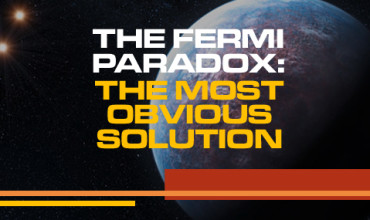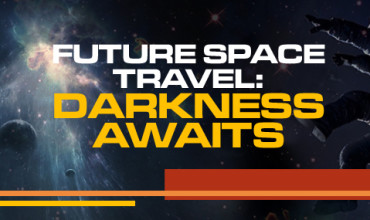Space Portrayal & Accuracy in Games, Part I
This is part 3 of my video game design series, and I’ll continue the Descent 3 example I used in Part 2 into this piece.
In my previous piece I mentioned a design problem: Descent 3 gameplay was apparently based (unconsciously, most likely) on dynamics of cars within city traffic. This is an issue with imagination of game designers. It seems logical that to design a flight simulator game there must be some grasp of flight dynamics as such, and a little experience playing flight simulators. Transferring/projecting an existing (slow) experience onto game dynamics of a fictional world does not make sense as one of the goals of a flight combat game is transmitting the thrill of flight combat; and speed and agility are part of that thrill.
Descent 3, being a space-themed game, has design flaws. Let’s get to the basics: pulp space fiction myths (and here
“fiction” also means “movies”). A lot of these ‘flaws’ are common, and occur frequently in movies and games.

1. Weapon sounds
There are no sounds in airless environments. Sound is vibration transmitted by air (or any other medium, but not vacuum). There might be some within the spaceship if the cockpit is pressurised (which is a bit of a waste of space in a fighter – fighter planes rarely have pressurised cockpits, pilots breathe air through masks instead). The pilot would also feel and hear sound transmitted through his body, somewhat attenuated by the armchair and anything between
weapons and himself. But not robots firing weapons around the ship, as in Descent 3.

2. Inertia
Inertial acceleration in space (and airless environments) is different to inertial acceleration in a planet’s atmosphere. This is because speed/velocity is affected by the gravitational pull of a planet (or star) in space, and atmosphere itself is an environment filled with gas that will slow an object down via friction. In the absence of atmospheric drag and in the absence of gravity pulling an object towards itself, an object under its own propulsion will accelerate endlessly as long as there is enough thrust/fuel (or an antigravity and/or gravitational pull or push has been established). Absence of air drag removes the maximum speed brakes, so to speak, which means an object in motion will continue in motion. A few games offer realistic, typically coined Newtonian, physics, but it’s uncommon, likely due to the learning curve it entails.
3. Plasma Cannons
In Descent 3, plasma cannons are typically portrayed as “Lasers”. In reality a LASER is a light emitter, the acronym meaning Light Amplification Stimulation by Emitted Radiation. What a laser does is intensify a beam of light by stimulating said beam with an external reagent (like argon gas).

Real plasma
Energy weapons as exemplified here are a fishy concept because they draw crazy amounts of power to be effective, and technically a piece of metal accelerated to hyperspeed (such as a railgun) would achieve the same result in atmosphere (the glow in front of a meteorite or a re-entering space capsule is caused by compression of air, which ignites and turns to plasma). To be effective in an airless environment an energy weapon would also need to have a source of gas or matter to compress, ignite and throw at high speed.

4. Lasers focused and visible miles away
This one is quite common in movies: lasers are actually not visible in vacuum; a laser ray only becomes visible in atmosphere. One of Lem’s Pirx tales’ plot is based on laser lights not being visible on the Moon; Pirx and others had to carry and explode gas tanks to trace laser rays. The problem with lasers, and beam weapons as such is, they are not focused at distance. A laser beam tends to disperse with distance in a spreading cone pattern, and loses energy the further it travels, which is why lasers are only visible to a length of some 40 kilometres.
Laser power is also drained by atmosphere diffraction, so laser beams as long range weapons simply wouldn’t work. (movies get everything wrong..). To put it simply, if laser rays are visible in atmosphere, they aren’t too much use as atmosphere drains power. If laser rays are effective in vacuum, they are not visible. And, of course, laser rays move at the speed of light – there is no visible delay whatsoever as laserlight travels to its target. Another problem is concentrating enough power: laser devices themselves tend to be huge and drawing crazy amounts of power, (megawatts of it, in fact). Yet another problem is not melting lenses when turning the beam on, and that’s also a limit to maximum laser power. If anything, gravity weapons (and the likes of magnetic mass drivers) might be more feasible.
5. Every planet has Earth-like atmosphere light behaviour
This is a bit weird, as, for example, the actual Mars atmosphere is very scarce, and as a consequence you’d be seeing the Sun and stars together (rather than the sun during the day, and the stars at night). With the Martian atmosphere being as rare as it is, its diffraction properties are similar to Earth atmosphere at high altitude (about 60-70 km up). It might add a very, very slight yellowish tint to the Sun, but the Sun itself will look mostly white. Our moon has no atmosphere at all, there is no atmospheric diffusion/diffraction of light whatsoever, and so the Sun will always be white in colour and the actual colour of Lunar terrain is brown (the Moon looks brown from the ISS, too). We see it as white at night because of the way human night vision works (grayscale). These are just some examples, differences between planets’ atmospheres and gravity fields as well as local effects (like Moon dust flying high up) would be a good way to add ambience.

6. Aliens are anything like humans

How many people on Earth know English? How many people off Earth can grasp radio transmissions?
Not very likely, no, unless we’re related to them (e. g. extraterrestrial humans from other planets and Earth humans are descendants of the same ancestors).
In the Descent series, this is grown to a plot blunder in that in the first two games murderous robots are infected (read “possessed”) by an alien virus. The chances that alien creatures would have a mentality similar to ours and be capable of creating a virus transmittable through human data links are much slimmer than cramming a parallel-port printer’s cable into a USB socket and expecting it to work. Reverse-engineering technology based on different principles is one of the greatest challenges a meeting between different planets’ civilisations would produce. Think what it’s like to reverse-engineer Android, yet alone Windows, and its underlying hardware, and you’ll grasp the notion. Just making something that’d compile for a version 20 PTMC’s OS (the company behind the mines, for those not familiar with the game series) would be an exercise in trying to figure out and work with and around intentional bugs remaining there for compatibility with previous versions, not to mention dozens of millions of lines of source code aliens wouldn’t have (and remember they’d have to decode our human language first to at least start to grasp it all). The real issue when different kinds of intelligence meet is mentality differences. Nobody can guarantee what makes perfect sense for an alien will make perfect sense for a human, and vice versa. A lot of sci-fi stories exploit this to an often humorous effect.
Part 4 of this series and part 2 of the post to continue next week!

Like FoH?
Fists of Heaven is ad-free and always will be. If you enjoyed the content above, help us out by sharing this post, or by commenting and letting us know what content you like and want to see more of. Thanks for reading!




